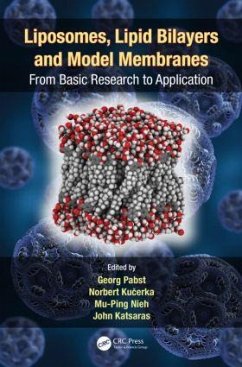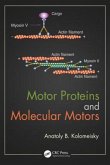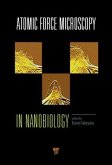Liposomes, Lipid Bilayers and Model Membranes
From Basic Research to Application
Herausgeber: Pabst, Georg; Katsaras, John; Nieh, Mu-Ping; Ku&
Liposomes, Lipid Bilayers and Model Membranes
From Basic Research to Application
Herausgeber: Pabst, Georg; Katsaras, John; Nieh, Mu-Ping; Ku&
- Gebundenes Buch
- Merkliste
- Auf die Merkliste
- Bewerten Bewerten
- Teilen
- Produkt teilen
- Produkterinnerung
- Produkterinnerung
With contributions from leading researchers in their fields, this book describes state-of-the-art lipid/model membrane research, and industrial and medical applications, all in one volume. The book is divided into two sections. The first section covers a range of basic research topics, from theory and computational simulations to current experimental research. The second part describes applications of lipid systems used in the pharmaceutical, textile, and food industries. Covering basic and applied research, this book serves as a useful reference for both the novice and the expert.
Andere Kunden interessierten sich auch für
![Motor Proteins and Molecular Motors Motor Proteins and Molecular Motors]() Anatoly B KolomeiskyMotor Proteins and Molecular Motors138,99 €
Anatoly B KolomeiskyMotor Proteins and Molecular Motors138,99 €![Atomic Force Microscopy in Nanobiology Atomic Force Microscopy in Nanobiology]() Atomic Force Microscopy in Nanobiology191,99 €
Atomic Force Microscopy in Nanobiology191,99 €![Biophysics for Beginners Biophysics for Beginners]() Helmut SchiesselBiophysics for Beginners180,99 €
Helmut SchiesselBiophysics for Beginners180,99 €![Inside the Photon Inside the Photon]() Tony FlemingInside the Photon191,99 €
Tony FlemingInside the Photon191,99 €![Trends in Biophysics Trends in Biophysics]() Trends in Biophysics185,99 €
Trends in Biophysics185,99 €![Basics of Molecular Recognition Basics of Molecular Recognition]() Dipankar ChatterjiBasics of Molecular Recognition275,99 €
Dipankar ChatterjiBasics of Molecular Recognition275,99 €![Skin Bioscience Skin Bioscience]() Skin Bioscience180,99 €
Skin Bioscience180,99 €-
-
-
With contributions from leading researchers in their fields, this book describes state-of-the-art lipid/model membrane research, and industrial and medical applications, all in one volume. The book is divided into two sections. The first section covers a range of basic research topics, from theory and computational simulations to current experimental research. The second part describes applications of lipid systems used in the pharmaceutical, textile, and food industries. Covering basic and applied research, this book serves as a useful reference for both the novice and the expert.
Hinweis: Dieser Artikel kann nur an eine deutsche Lieferadresse ausgeliefert werden.
Hinweis: Dieser Artikel kann nur an eine deutsche Lieferadresse ausgeliefert werden.
Produktdetails
- Produktdetails
- Verlag: Taylor & Francis Ltd (Sales)
- Seitenzahl: 480
- Erscheinungstermin: 4. März 2014
- Englisch
- Abmessung: 261mm x 184mm x 38mm
- Gewicht: 1019g
- ISBN-13: 9781466507098
- ISBN-10: 1466507098
- Artikelnr.: 38498805
- Herstellerkennzeichnung
- Produktsicherheitsverantwortliche/r
- Europaallee 1
- 36244 Bad Hersfeld
- gpsr@libri.de
- Verlag: Taylor & Francis Ltd (Sales)
- Seitenzahl: 480
- Erscheinungstermin: 4. März 2014
- Englisch
- Abmessung: 261mm x 184mm x 38mm
- Gewicht: 1019g
- ISBN-13: 9781466507098
- ISBN-10: 1466507098
- Artikelnr.: 38498805
- Herstellerkennzeichnung
- Produktsicherheitsverantwortliche/r
- Europaallee 1
- 36244 Bad Hersfeld
- gpsr@libri.de
Georg Pabst received his Ph.D. in physics from the Graz University of Technology, Austria, and completed postdoctoral research at the Canadian Research Council, Chalk River, Ontario. After his return to Austria, he was a senior research officer at the Austrian Academy of Sciences and moved to the University of Graz, where he currently holds the position of assistant professor. His research is focused on the physics of biological membranes with the aim of delineating the functional role of membrane lipids in cellular transport and signaling. Norbert Küerka received his Ph.D. in biophysics from the Faculty of Mathematics, Physics and Informatics at Comenius University in Bratislava, Slovakia, in 2003. He completed his postdoctoral research at the Department of Physics, Carnegie Mellon University in Pittsburgh, Pennsylvania, and as a National Sciences and Engineering Research Council visiting fellow at the Canadian Neutron Beam Centre, Chalk River, Ontario. In 2008, he joined the National Research Council of Canada, recently becoming an associate research officer. His work is focused on determining the structure of biological model membranes and unraveling the structure-function relationships in their highly complex behavior. Mu-Ping Nieh received his Ph.D. in the Department of Chemical Engineering at the University of Massachusetts, Amherst, USA. He then worked as a postdoctoral researcher-a joint position at National Institute of Standards and Technology and The Pennsylvania State University. In 2002, he joined the National Research Council, Canada, at Chalk River, Ontario. Eight years later (2010), he became an associate professor in the Department of Chemical and Biomolecular Engineering at the University of Connecticut, Storrs, USA. His research primarily focuses on the underlying principles of spontaneous structures formed by soft materials, including lipids, polymers, and proteins, seeking a fundamental understanding of the structure-function relationship of self-assemblies. John Katsaras is a senior scientist and distinguished R&D staff at Oak Ridge National Laboratory (ORNL). He received his Ph.D. in biophysics from the University of Guelph, Ontario, Canada. Prior to joining ORNL, he was a principal research officer at the National Research Council of Canada. He is internationally recognized for scientific contributions to the field of membrane biophysics, to materials of biological and medical relevance, and the application of x-ray and neutron scattering techniques to biologically relevant systems.
PART 1 Basic Research Topics. Soft Matter Physics of Lipid Membrane-Based
Assemblies. Nonlamellar Lipid Aggregates. Extractant Molecules as Hosts in
Surfactant Monolayers or Bilayers. Molecular Dynamics of Lipid Bilayers:
Standards, Successes, and Works in Progress. New Insights into the
Peptide-Membrane Partitioning Equilibrium from In Silico Free
Surface-to-Bilayer Peptide Insertion. Basic Aspects and Applications of
Lipids and Protein Dynamics. Lipid Diversity and Its Implications on
Membrane Organization. Liposome-Based Models for Membrane Rafts:
Methodology and Applications. Nanoscale Membrane Mimetics for Biophysical
Studies of Membrane Proteins. Microemulsions: Biomimetic Systems for
Characterization of Biomembranes and Their Associated Biomolecules.
Locations of Small Biomolecules in Model Membranes. Membrane Medicine. The
Structural Diversity of DNA-Phospholipid Aggregates. An Update on Active
Membranes. PART 2 Technology. Medical Applications of Lipid Nanoparticles.
Polymer-Modified Liposomes: From Long-Circulating to Multifunctional. Drug
Formulations Based on Self-Assembled Liquid Crystalline Nanostructures.
Tethered Lipid Membranes. Ion-Transporting Supported and Tethered Lipid
Bilayers That Incorporate Biological Membrane Transport Proteins. Role of
Liposomes in Textile Dyeing. Micro- and Nanoparticles for Controlling
Microorganisms in Foods. Index.
Assemblies. Nonlamellar Lipid Aggregates. Extractant Molecules as Hosts in
Surfactant Monolayers or Bilayers. Molecular Dynamics of Lipid Bilayers:
Standards, Successes, and Works in Progress. New Insights into the
Peptide-Membrane Partitioning Equilibrium from In Silico Free
Surface-to-Bilayer Peptide Insertion. Basic Aspects and Applications of
Lipids and Protein Dynamics. Lipid Diversity and Its Implications on
Membrane Organization. Liposome-Based Models for Membrane Rafts:
Methodology and Applications. Nanoscale Membrane Mimetics for Biophysical
Studies of Membrane Proteins. Microemulsions: Biomimetic Systems for
Characterization of Biomembranes and Their Associated Biomolecules.
Locations of Small Biomolecules in Model Membranes. Membrane Medicine. The
Structural Diversity of DNA-Phospholipid Aggregates. An Update on Active
Membranes. PART 2 Technology. Medical Applications of Lipid Nanoparticles.
Polymer-Modified Liposomes: From Long-Circulating to Multifunctional. Drug
Formulations Based on Self-Assembled Liquid Crystalline Nanostructures.
Tethered Lipid Membranes. Ion-Transporting Supported and Tethered Lipid
Bilayers That Incorporate Biological Membrane Transport Proteins. Role of
Liposomes in Textile Dyeing. Micro- and Nanoparticles for Controlling
Microorganisms in Foods. Index.
PART 1 Basic Research Topics. Soft Matter Physics of Lipid Membrane-Based
Assemblies. Nonlamellar Lipid Aggregates. Extractant Molecules as Hosts in
Surfactant Monolayers or Bilayers. Molecular Dynamics of Lipid Bilayers:
Standards, Successes, and Works in Progress. New Insights into the
Peptide-Membrane Partitioning Equilibrium from In Silico Free
Surface-to-Bilayer Peptide Insertion. Basic Aspects and Applications of
Lipids and Protein Dynamics. Lipid Diversity and Its Implications on
Membrane Organization. Liposome-Based Models for Membrane Rafts:
Methodology and Applications. Nanoscale Membrane Mimetics for Biophysical
Studies of Membrane Proteins. Microemulsions: Biomimetic Systems for
Characterization of Biomembranes and Their Associated Biomolecules.
Locations of Small Biomolecules in Model Membranes. Membrane Medicine. The
Structural Diversity of DNA-Phospholipid Aggregates. An Update on Active
Membranes. PART 2 Technology. Medical Applications of Lipid Nanoparticles.
Polymer-Modified Liposomes: From Long-Circulating to Multifunctional. Drug
Formulations Based on Self-Assembled Liquid Crystalline Nanostructures.
Tethered Lipid Membranes. Ion-Transporting Supported and Tethered Lipid
Bilayers That Incorporate Biological Membrane Transport Proteins. Role of
Liposomes in Textile Dyeing. Micro- and Nanoparticles for Controlling
Microorganisms in Foods. Index.
Assemblies. Nonlamellar Lipid Aggregates. Extractant Molecules as Hosts in
Surfactant Monolayers or Bilayers. Molecular Dynamics of Lipid Bilayers:
Standards, Successes, and Works in Progress. New Insights into the
Peptide-Membrane Partitioning Equilibrium from In Silico Free
Surface-to-Bilayer Peptide Insertion. Basic Aspects and Applications of
Lipids and Protein Dynamics. Lipid Diversity and Its Implications on
Membrane Organization. Liposome-Based Models for Membrane Rafts:
Methodology and Applications. Nanoscale Membrane Mimetics for Biophysical
Studies of Membrane Proteins. Microemulsions: Biomimetic Systems for
Characterization of Biomembranes and Their Associated Biomolecules.
Locations of Small Biomolecules in Model Membranes. Membrane Medicine. The
Structural Diversity of DNA-Phospholipid Aggregates. An Update on Active
Membranes. PART 2 Technology. Medical Applications of Lipid Nanoparticles.
Polymer-Modified Liposomes: From Long-Circulating to Multifunctional. Drug
Formulations Based on Self-Assembled Liquid Crystalline Nanostructures.
Tethered Lipid Membranes. Ion-Transporting Supported and Tethered Lipid
Bilayers That Incorporate Biological Membrane Transport Proteins. Role of
Liposomes in Textile Dyeing. Micro- and Nanoparticles for Controlling
Microorganisms in Foods. Index.








